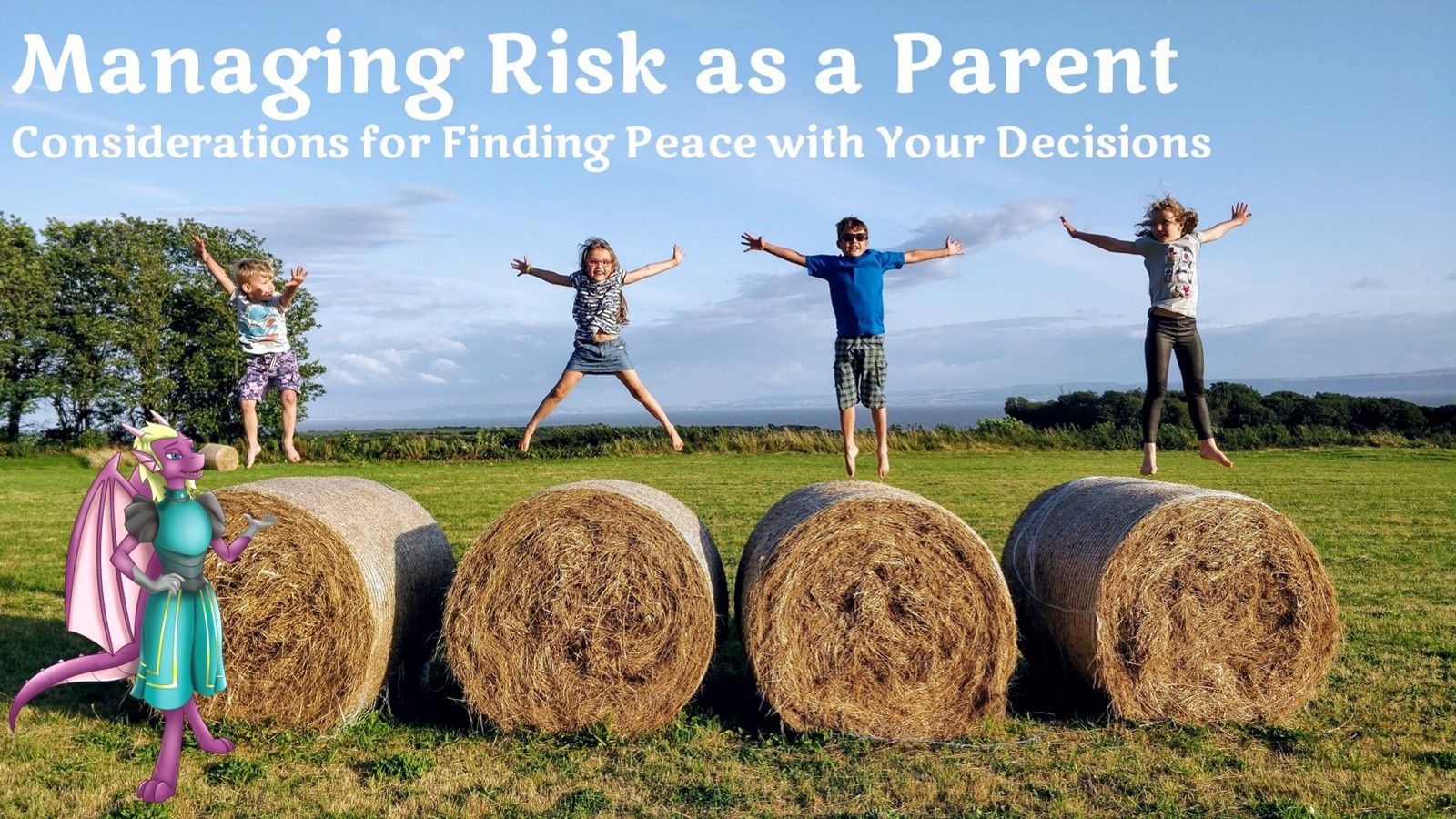
In the wake of the Silicon Valley Bank collapse, there has been much discussion about risk. The same was true after FTX unraveled and the extent of Sam Bankman-Fried’s mismanagement was brought to light. The same was also true of Silvergate Bank. Risk, as a concept, is getting a lot of attention.
The standard story on risk goes something like this: an entity considers a potential action, forecasts a distribution of possible future outcomes associated with that action, assigns probabilities to those outcomes, assigns some “value state” to those outcomes, and then processes all that information to arrive at a decision about the degree to which the entity will take the potential action.
There are also many well-known idioms related to risk. “High risk equals high reward.” “You have to know your risk tolerance.” “It’s wise to diversify your risk” (especially your bonds). You can “play it safe” or “play with fire.” Smart companies should “hedge their risk.” And, of course, “you have to risk it for the biscuit."
As it relates to their children, most parents are familiar with the concept of risk. On one extreme are the parents who want to protect their children from any degree of it; on the other extreme are parents who aren’t fully aware of the extent to which their children are being exposed to it.
What are some key dimensions of risk for parents to consider? How can they go about assessing what is the “right” spot on the risk spectrum for their particular situation? And what other considerations can it benefit parents to take into account in relation to risk-related decisions?
The following sections dive deeper into the topic … proceed at your own risk, of course.
There Is Always Risk

Many aspects of life are uncontrollable, and this is the underlying source of risk. As a parent, this can be a difficult reality to navigate. Some steps must be taken to protect against bad outcomes for your children, but usually there is a threshold beyond which efforts invested to control the uncontrollable provide diminishing returns.
Calibrating this threshold requires a high degree of sensitivity to the long-term well-being of your children, and it also requires a high degree of clarity on what is a “bad outcome.” Often, pain or difficulty is seen as undesirable in the moment, but it carries with it the opportunity for children to develop greater resilience and internal processing capability in the future.

The Risk of Not Doing

When it comes to making a risk-related decision, many parents focus on the potential outcomes that can happen if the action is taken. However, it can be equally valuable to focus on the potential outcomes that can happen if the action is not taken.
Consider the example of whether to allow children to engage in a serious contact sport, like football or mixed martial arts. There is no question that doing so increases the risk of injury. At the same time, there are many inner personal qualities that can be developed and strengthened through exposure to external stresses.
Even parents who are able to clearly define the risks of both taking and not taking particular actions may experience challenges in evaluating the two against each other. Biases from personal preferences can influence the decision, so that the resulting choice ends up being more a reflection of what the parent is comfortable with than what is in the children’s best interests.
In cases like these, parents may feel inclined to turn to authority figures whose expertise can provide them with a higher level of inner peace in relation to their decisions. More information can be helpful in reaching a conclusion, but, ultimately, it can be beneficial to parents to take full responsibility for their choices. This makes it easier to continually assess one’s decision-making process and to gain greater clarity on the principles one values and prioritizes adhering to.
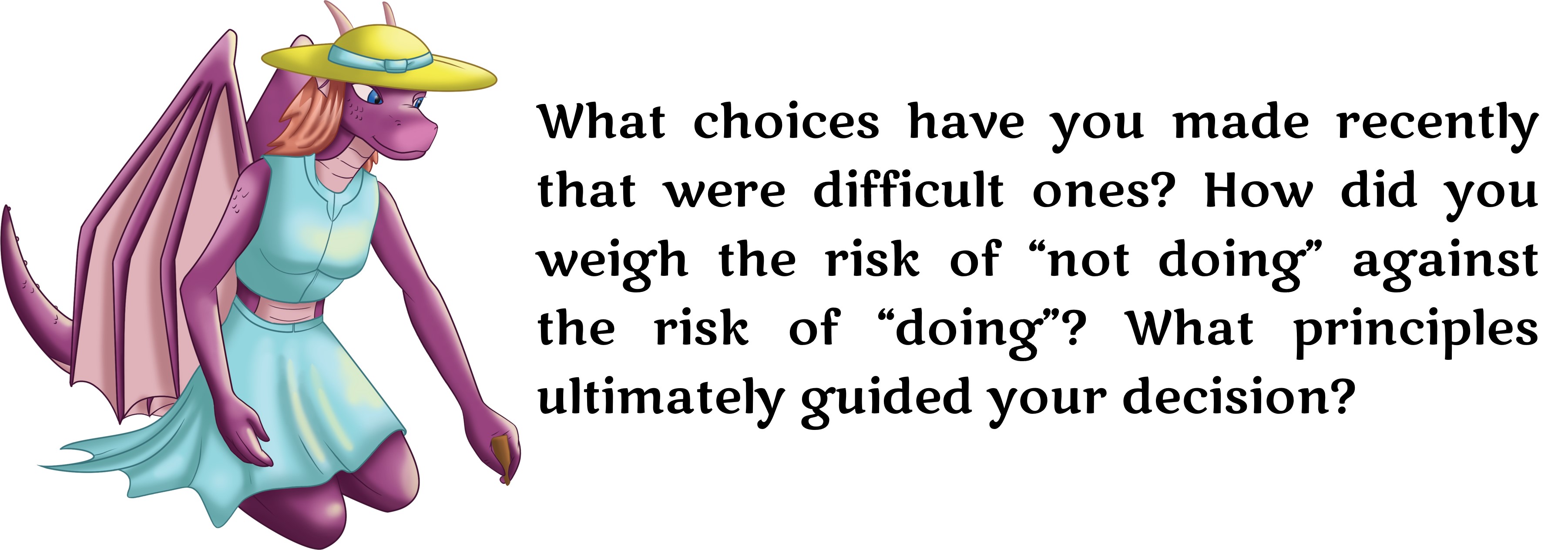
Risk Exists in Many Dimensions

The easiest risk for parents to take accountability for is financial risk. Without sufficient income, families can be exposed to significant hardships. Parents must find ways to contribute to society so that they can earn enough money to protect their children and provide the basic necessities.
However, this is not the only risk that parents must manage for their children. As touched on above in the football and mixed martial arts example, there is also physical risk, which includes injury risk and also risks related to illness and the establishment of unhealthy habits. Diet, exercise, sleep, cleanliness, and an appreciation for one’s body are all important aspects to consider.
Do your children shower every other day? Or 6 times each day? Both ends of the spectrum carry risks that can impact children’s long-term perspectives on cleanliness – and also prompt second-order, derivative personal challenges. How parents decide what standard to enforce, and how willing they are to enforce it, goes a long way to determining how their children will experience that dimension of life.
Each of the risks mentioned so far in this section is also connected to mental-emotional risk. How do your children respond when they experience disappointment, sadness, frustration, anger, distraction, boredom, and other sentiments? What expectations have they developed for how their lives “should” go? How are those expectations related to the ways you have guided them to handle mental-emotional difficulties in the past? In general, it can be beneficial for parents to develop a strong connection with their children so that they can get an accurate gauge on their current mental-emotional strength and use that understanding to help them train for improvement.
One final risk for parents to consider in relation to their children is relationship risk. This is applicable for each unique connection of family members: you to your partner, you to each of your children, your partner to each of your children, and each of your children to each other child. There may be other connections as well.
What is most convenient for not upsetting any relationship in the short term may not always be what is best for strengthening that relationship in the long term. Sometimes, choosing what is least likely to cause conflict can block the cultivation of respect, appreciation, loyalty, and other qualities. Similarly, if parents choose to take the hardline approach and do so without being grounded in love for their children, they can cause damage to the relationship. Being clear, then, about one’s intentions, and being brutally honest in evaluating oneself after observing the results of one’s choices, can help parents deepen their sense of peace in how they approach their decisions.
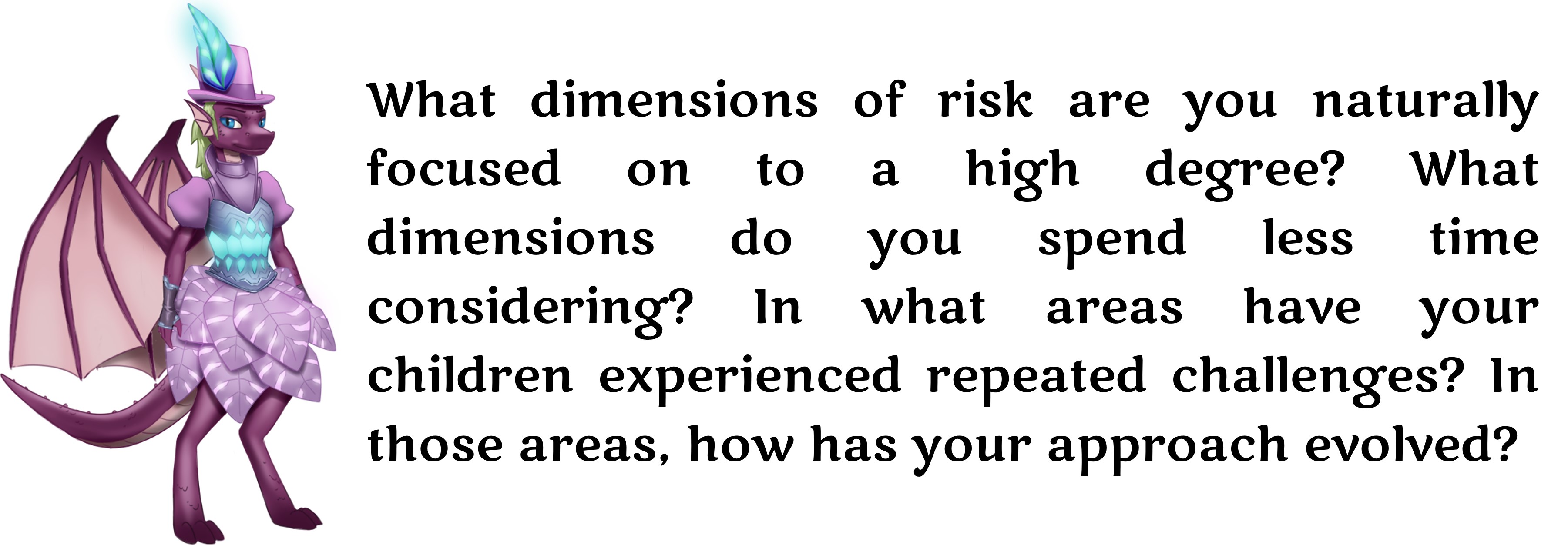
Talking to Children About Risk
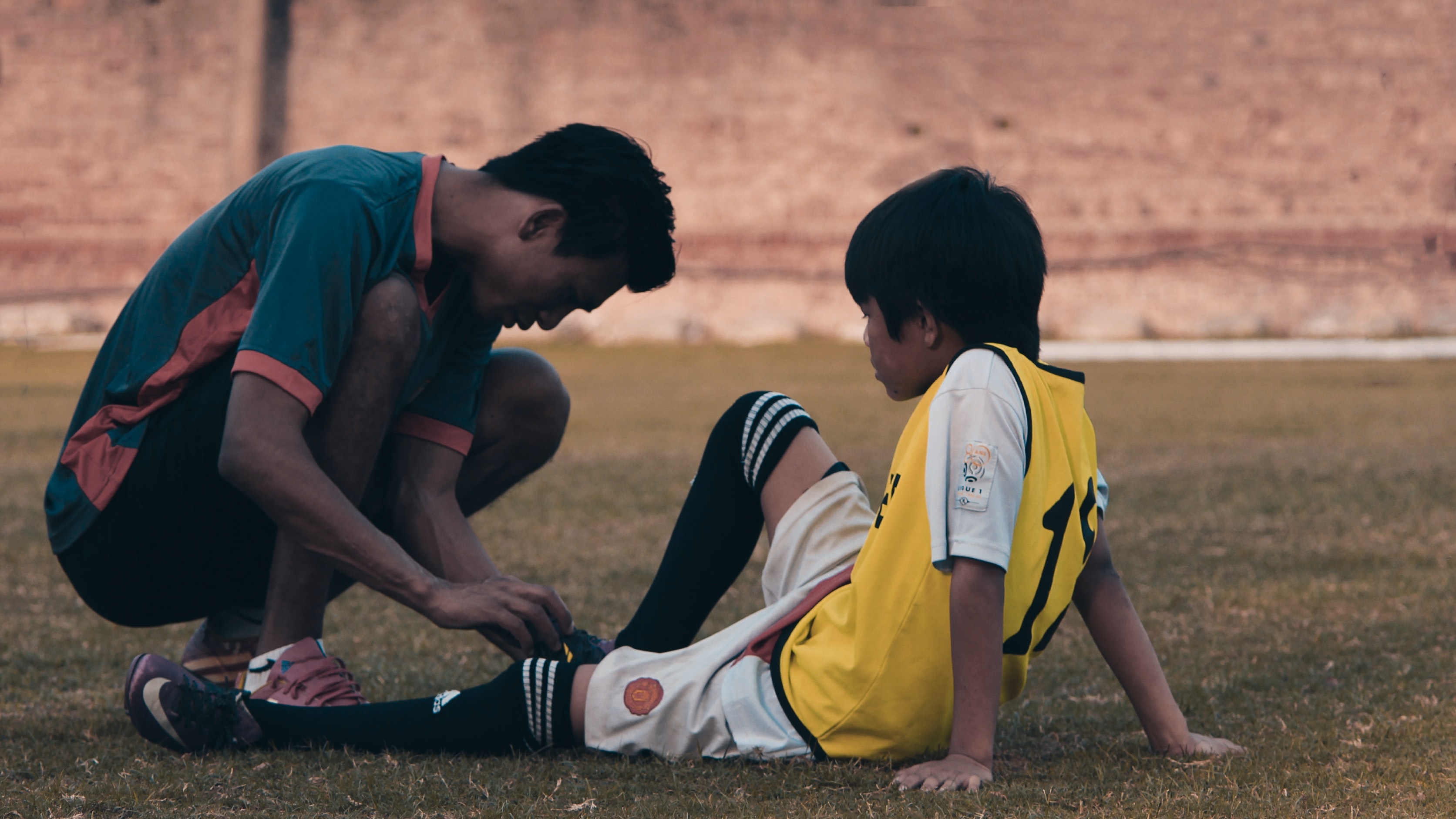
Parents can provide tremendous value to their children by having open conversations about risk and by sharing the principles that underlie their key decisions. In doing so, children can learn to (1) broaden their perspective and consider aspects they would have otherwise ignored; (2) distinguish between their short-term preferences and their long-term well-being; (3) gain authority over their desires and develop a mature view on what is in their best interest; (4) provide feedback to their parents that is worthy of being received and integrated; and (5) start developing their own principles by gauging their personal experience against the frameworks provided by their parents.
Communicating regularly about their decisions will also increase the likelihood that parents develop self-awareness. Parents can pay attention to their own logic and their own states of being as they are expressing themselves to their children and notice when there are inconsistencies, unresolved emotions, fogginess/vagueness, and or uncertainty/insecurity. Each of these sentiments can, through reflection, unlock meaningful realizations.
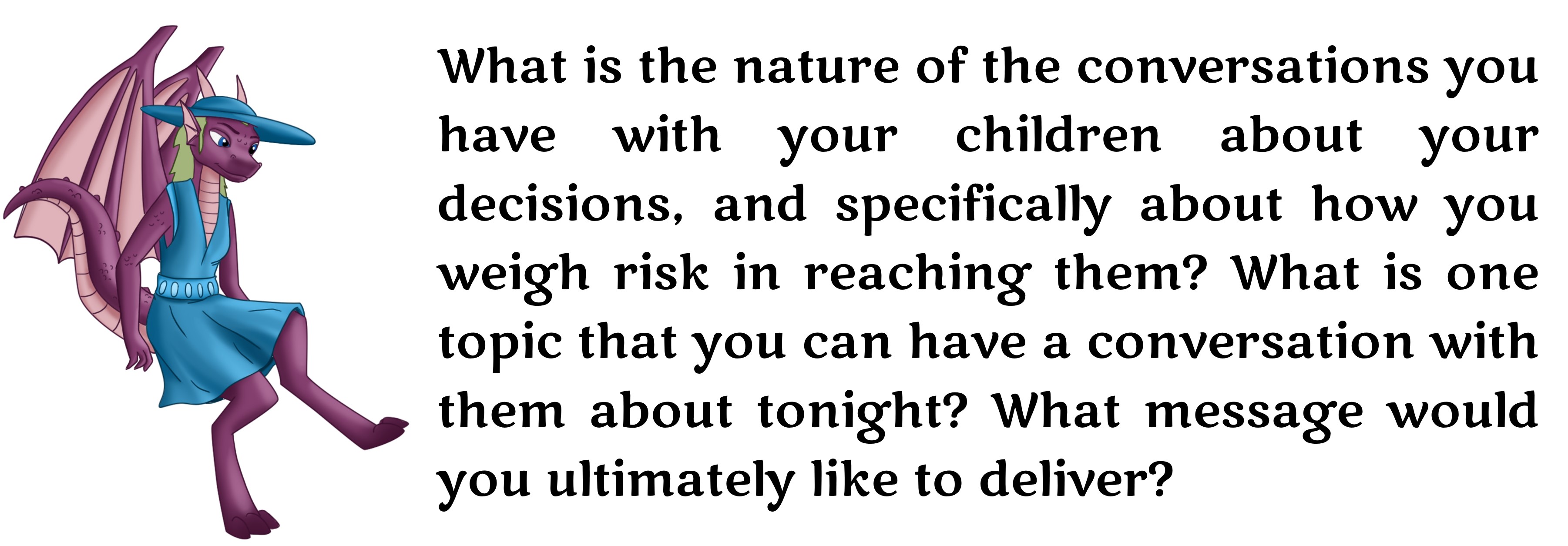
Conclusion
Overall, when it comes to decisions on how to raise their children, parents have a lot to consider in relation to risk, and there are no hard and fast answers for how to do so. Instead, parents can benefit from refining their sensitivity – both to what is happening inside of them and what is happening with their children – and from continually testing the insights they are gaining from their current experience up against the principles they have previously chosen to prioritize.
In undertaking this process, if one is ruthless in the pursuit of clarity, what will ultimately be revealed is that, in all decisions, something will need to be sacrificed. This is similar to the idea of opportunity cost – when one decision is made, the potential benefits of other possibilities are denied. The key questions, then, become: what is that parents are willing to sacrifice? What are they not willing to sacrifice? And how resolutely do they hold to these choices?
The deeper one goes into these questions, the more integrity one will have in guiding one’s children through the challenges of growing up. Thank you for reading, and best of luck!
Related Aim & Conquer Social Media Awareness Prompts



Are you interested in learning more about ways to manage the stress you and your team experience at work? Click below to sign up for Aim & Conquer's newsletter and to receive a free reflection on "healing in-tensions" that can support efforts to reduce stress.

